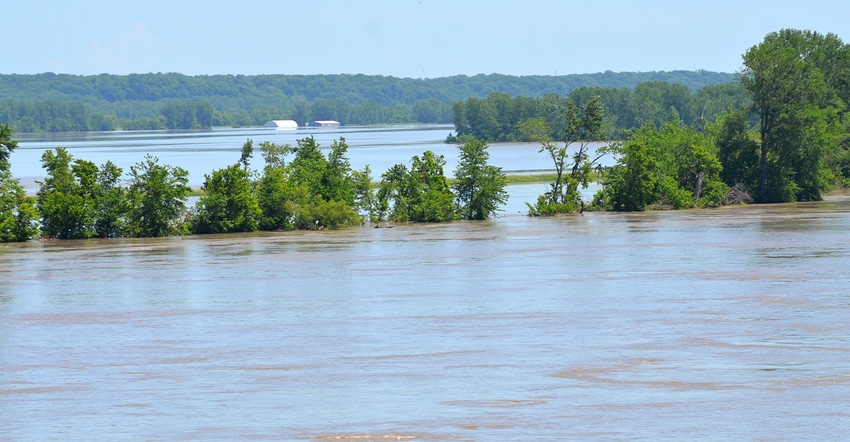September 4, 2019

The rain events keep coming, leaving a mess for farmers to clean up before the 2020 planting season.
There are three stages of soil restoration after a flood, says Kent Shannon, MU Extension agricultural engineering specialist.
First, remove debris and soil sediment. Second, prevent further erosion using cover crops and other methods. Third, evaluate nutrient needs.
Farmers can renovate land with sand deposits of 0 to 2 inches through normal tillage, Shannon says. Land with deposits 2 to 6 inches deep benefit from tillage with a chisel plow or moldboard plow. Spread or remove deposits of 7 to 8 inches.
Sand depth can be measured using a soil electrical conductivity test.
When working on sand-covered soils, keep in mind that tractors and other earth-moving equipment can only do about half what they do on undamaged soil. You need more horsepower because of limited traction.
Plant cover crops to protect soils from wind and water erosion and crusting. Cover crops also put critical nutrients back into the soil, Shannon says.
Microbial soil damage
"The degree of damage dictates the process required to bring the soil back to its preflood condition," MU Extension agronomist Todd Lorenz says.
Long-standing floodwaters cause flooded soil syndrome, in which lack of oxygen damages the soil's microbial population. Soil microbes play an important role in nutrient cycling, plant nutrition, soil biology and soil chemistry.
In flooded soil syndrome, the root system of mycorrhizal fungi loses its ability to take up phosphorus. The phosphorus remains in the ground, but it is not available the first planting season after a flood.
This creates a greater need for good nutrient management. Lorenz recommends applying at least 60 pounds of phosphorus per acre to flood-damaged soils during the first year after a flood.
Aim for a soil pH of 6.5, he says. In that range, the most phosphorus is available in soil. Even with soil pH of 5, you lose $33 for every $100 spent on fertilizer. Use a soybean seed inoculant in the first post-flood season.
Fight compaction
Compacted soils also cause problems. Poor soils require testing and renovation. Reevaluate your entire nutrient management plan, Lorenz says. Soil tests cost money but provide an important return on investment. "Be soil smart," he says.
As for weeds, the floodwaters giveth and the floodwaters taketh away, Lorenz says. Flooding may wash some weed seed downriver while bringing in other weed seed from elsewhere.
Cover crops offer critical protection on flooded fields, Lorenz says. They help to control weeds and add organic matter to the soil. They allow the soil to dry faster and help the microbial population recover from flooded soil syndrome.
Source: University of Missouri Extension, which is solely responsible for the information provided and is wholly owned by the source. Informa Business Media and all its subsidiaries are not responsible for any of the content contained in this information asset.
You May Also Like




